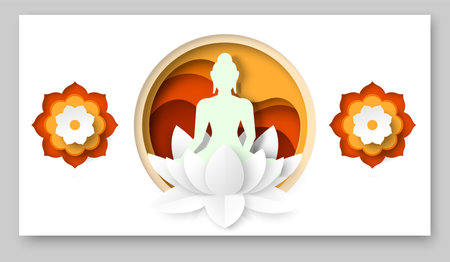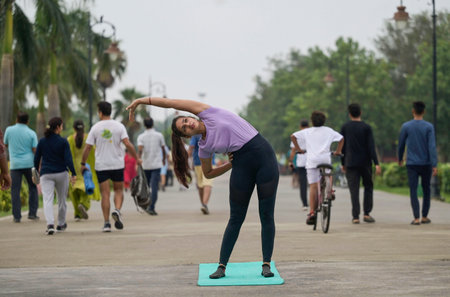Celebrating the Spirit of Indian Festivals
India is a land of colourful festivals and deep-rooted traditions, where every celebration tells a unique story. From Diwali’s shimmering diyas to the vibrant hues of Holi, these festivals are more than just rituals; they are moments that bring people together across generations. For elderly citizens, participating in festivals is not only about following customs but also about connecting with their roots and reliving cherished memories. The festive atmosphere fosters a sense of belonging, bridging gaps between young and old, and encouraging active involvement in community life. Engaging in festival preparations, traditional dances, and family gatherings gives seniors a renewed sense of purpose and joy. Indian festivals play a crucial role in promoting mental and emotional wellness among the elderly, as they feel valued and included in these shared celebrations. This interconnectedness strengthens the fabric of Indian society, proving that age is no barrier when it comes to celebrating life’s joyous occasions.
2. Traditions That Bind Us: Indian Customs and Rituals
India’s vibrant traditions and rituals are not just remnants of the past but living practices that continue to unite generations. From the daily lighting of diyas at dawn to the elaborate preparations for weddings, every custom is a thread in the rich tapestry of Indian society. These customs are more than spiritual—they serve as channels for intergenerational learning and promote respect for elders, which is central to Indian values.
Age-old Practices Across Regions
Each region in India boasts unique traditions, yet all emphasize family bonding, community involvement, and reverence for ancestors. Elderly family members play a crucial role as keepers of these customs, passing down knowledge through storytelling, practical demonstrations, and participation in rituals. The following table showcases some widely practiced traditions and their significance:
| Tradition/Ritual | Region | Cultural Significance |
|---|---|---|
| Puja (Prayer Ceremonies) | All India | Connects families spiritually; elders guide rituals |
| Kanya Pujan (Worship of Young Girls) | Northern India | Celebrates feminine energy; fosters respect for women across ages |
| Pongal/Sankranti Celebrations | South & West India | Marks harvest and gratitude; involves all age groups in festivities |
| Bihu Dance & Feasts | North East India | Promotes social unity; elders teach dances and songs to youth |
Intergenerational Learning through Rituals
Elders act as cultural anchors by leading traditional activities such as rangoli making during Diwali or singing folk songs during Holi. These moments foster sharing of wisdom while keeping the younger generation rooted in their heritage. In many homes, grandparents teach grandchildren how to perform aarti or tie sacred threads, turning everyday rituals into active learning experiences.
Active Participation Strengthens Bonds
Involving elderly family members in festive preparations—be it making sweets like laddus or organizing community gatherings—keeps them physically engaged and mentally stimulated. This active lifestyle training within the context of tradition ensures that seniors remain an integral part of family life, promoting both well-being and cultural continuity.

3. The Role of Elders in Festivals and Family Culture
In every Indian household, elders are the torchbearers of tradition, especially during festivals. They are not just respected family members but also the guiding force behind cultural celebrations. Their experience and wisdom shape the way each festival is celebrated, ensuring that customs are preserved and passed down to younger generations. During Diwali, Holi, Pongal, or Eid, elders take on the role of storytellers, narrating the significance of rituals and sharing age-old anecdotes that make each celebration meaningful.
The Wisdom Keepers
Elders possess a deep understanding of traditional practices, from preparing authentic festive dishes to performing sacred pujas. Their knowledge helps maintain the purity of rituals and ensures that the true spirit of Indian festivals remains intact. Through their guidance, children learn the importance of values such as respect, gratitude, and togetherness.
Fostering Family Unity
Festivals in India are synonymous with family gatherings. Elders play a crucial role in bringing everyone together, bridging generational gaps through shared activities like singing bhajans, decorating homes with rangoli, and leading prayers. Their presence strengthens familial bonds and creates cherished memories for all members.
Leading by Example
By actively participating in festivities and encouraging involvement from every member, elders inspire an active lifestyle within the family. Their enthusiasm for traditional games, dance performances, and communal feasts motivates younger generations to embrace both culture and movement. This active engagement not only preserves heritage but also promotes physical well-being among elders themselves.
In essence, elders are the heart of Indian festivals and traditions. Their leadership during festive occasions nurtures unity, instills cultural pride, and ensures that the legacy of Indian celebrations continues to thrive across generations.
4. Active Lifestyle for Seniors: Adapting Ancient Practices
India’s vibrant cultural heritage offers a treasure trove of physical activities that are both enjoyable and beneficial for elderly citizens. Embracing these time-tested traditions can help seniors maintain flexibility, strength, and overall well-being, while also staying connected to their roots. By tailoring ancient practices like yoga, pranayama, and folk dance to suit elderly needs, we can ensure active ageing and greater independence.
Yoga: Gentle Movements for All Ages
Yoga is deeply woven into Indian culture and is renowned globally for its holistic benefits. For seniors, modified asanas (poses) focusing on balance, joint mobility, and relaxation are ideal. Yoga not only strengthens the body but also calms the mind, reduces stress, and improves sleep quality.
Sample Yoga Asanas for Seniors
| Asana | Benefits | How to Adapt for Seniors |
|---|---|---|
| Tadasana (Mountain Pose) | Improves posture & balance | Use chair support if needed |
| Vrikshasana (Tree Pose) | Enhances stability & focus | Hold onto wall or sturdy object |
| Shavasana (Corpse Pose) | Deep relaxation & stress relief | Use cushion under head/knees |
Pranayama: Breathwork for Vitality
Pranayama—ancient yogic breathing techniques—can be easily practiced by the elderly. Exercises such as Anulom Vilom (alternate nostril breathing) and Bhramari (bee breath) help improve lung capacity, manage anxiety, and boost energy levels without any strain on joints or muscles.
Simple Pranayama Techniques for Seniors
| Name | Main Benefit | Cultural Context |
|---|---|---|
| Anulom Vilom | Balances mind & body; aids respiratory health | Practiced during morning rituals in many Indian homes |
| Bhramari Pranayama | Eases mental tension; supports cognitive function | Purpled in traditional meditation sessions at temples/ashrams |
Folk Dance: Joyful Movement with Cultural Flavour
Dancing is integral to most Indian festivals—be it Garba during Navratri or Bhangra during Lohri. Folk dances foster community bonding and provide a fun cardiovascular workout. For seniors, steps can be simplified while keeping the spirit alive with traditional music and group participation.
Popular Folk Dances Suitable for Elders in India:
- Garba: Circular movements with clapping; easy to follow at a slow pace.
- Bhangra: Energetic but can be adapted with smaller steps and hand movements.
- Kummi: South Indian rhythmic clapping dance, often performed while seated.
Integrating these ancient practices into daily routines helps seniors nurture their bodies and minds while celebrating India’s rich traditions. Such activities offer an ideal blend of health, happiness, and heritage—empowering elders to lead vibrant lives filled with purpose and pride.
5. Community Engagement: Group Activities & Social Involvement
Social engagement is a vital aspect of an active lifestyle, especially for the elderly in India. Participating in group activities not only enhances physical well-being but also nurtures emotional health and keeps traditions alive. Indian festivals provide the perfect opportunity for seniors to be involved with their communities, celebrate culture, and maintain meaningful connections.
Bhajan Groups: Connecting Through Spiritual Music
Joining a bhajan group is a popular way for elders to remain socially active. These devotional singing groups meet regularly at temples or community halls, particularly during festival times like Navratri, Janmashtami, or Ganesh Chaturthi. Seniors can participate by singing, playing instruments, or simply enjoying the spiritual atmosphere. Bhajan sessions foster companionship and promote mental relaxation while honouring cultural roots.
Temple Volunteering: Service and Togetherness
Temples are central to Indian social life, especially during major festivals such as Diwali and Holi. Elderly individuals can volunteer for various temple activities like organising pujas, decorating the premises, distributing prasad, or guiding visitors. Such involvement not only gives a sense of purpose but also creates opportunities for intergenerational bonding and collective joy.
Local Cultural Clubs: Celebrating Traditions Together
Many neighbourhoods in India have cultural clubs that organise events during festive seasons—be it Durga Puja pandals in Kolkata or Onam sadhyas in Kerala. Elders can join these clubs to take part in dance rehearsals, cooking competitions, storytelling sessions, or handicraft exhibitions. This active participation helps seniors stay mentally alert and physically engaged while sharing their wisdom and experiences with younger members.
Benefits of Social Involvement During Festivals
Regular participation in community activities reduces feelings of isolation and boosts self-esteem among the elderly. It encourages movement, stimulates the mind, and preserves traditional values through shared celebrations. By staying connected through bhajan groups, temple volunteering, and local clubs, seniors in India can experience holistic wellness while keeping the vibrant spirit of Indian festivals alive.
6. Nutrition and Wellbeing: Indian Festive Foods for Elder Health
Celebrating with Conscious Choices
Indian festivals are synonymous with delicious food, vibrant gatherings, and joyful celebrations. However, festive treats like laddus, jalebis, biryanis, and rich curries can sometimes be too heavy or oily for elders, especially those managing diabetes, hypertension, or digestive sensitivities. To keep the spirit of celebration alive while prioritising elder health, it is important to make mindful modifications to traditional recipes.
Tips for Modifying Traditional Festive Foods
1. Opt for Healthier Cooking Methods
Switch deep frying for baking or air frying when making snacks like samosas or pakoras. This small change reduces oil content but retains the beloved crunch and flavour.
2. Choose Whole Grains and Millets
Swap refined flour (maida) with whole wheat, ragi, bajra, or jowar in sweets and savouries. These grains are rich in fibre and help maintain stable blood sugar levels, important for elderly wellbeing.
3. Use Natural Sweeteners
Replace white sugar with jaggery (gur), dates, or stevia in desserts like kheer or halwa. These alternatives have a lower glycaemic index and add depth of taste rooted in Indian tradition.
4. Add More Seasonal Vegetables & Pulses
Incorporate local vegetables such as lauki (bottle gourd), carrots, or spinach into dishes like pulao or curries to boost nutrient intake and support digestion.
5. Reduce Salt & Spices Smartly
Lower salt in pickles and chutneys by using lemon juice, amla (Indian gooseberry), or herbs to enhance flavour without compromising heart health.
Preserving Taste While Prioritising Health
Elder-friendly festive meals do not mean giving up on authenticity or taste. With thoughtful ingredient swaps and cooking techniques, families can ensure elders enjoy festival spreads guilt-free. Encourage everyone to participate in preparing these modified dishes together—honouring tradition while nurturing health.
Cultivating Community and Joy
Sharing healthy festive foods not only supports elders’ nutrition but also strengthens family bonds during celebrations like Diwali, Pongal, Eid, Christmas, and Onam. By embracing inclusive menus that cater to all ages, Indian festivals become a true reflection of caring for every generation’s wellbeing.

